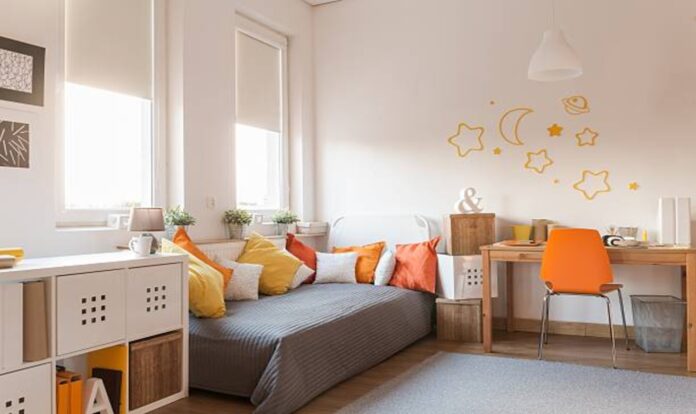Introduction:
Designing a children’s room is an exciting opportunity to create a space that sparks imagination, cultivates creativity, and provides comfort. Whether you’re setting up a nursery or revamping a kid’s bedroom, incorporating elements that inspire and engage can make all the difference. Here are five best ways to decorate a children’s room that will transform it into a magical and welcoming haven.
Colors and Themes:
Choosing the right colors and themes sets the foundation for a captivating children’s room. Bright, vibrant hues like yellows, blues, and pinks can evoke a sense of energy and playfulness. Opt for themes that reflect your child’s interests, such as animals, outer space, or princesses. Wall decals, murals, or themed bedding can tie the room together and create a whimsical atmosphere. Remember to strike a balance between a theme that captures their imagination and one that can adapt as they grow.
Functional Furniture:
Incorporating functional furniture not only maximizes space but also adds character to the room. Opt for multi-purpose pieces like beds with built-in storage or desks with shelves. Colorful and child-sized furniture encourages independent play and learning. Consider adding a reading nook with a cozy chair or a mini art station with a small table and chairs. These practical additions create designated spaces for different activities while promoting organization and creativity.
Interactive Wall Decor:
Transform plain walls into interactive canvases with creative wall decor. Magnetic or chalkboard walls provide an opportunity for artistic expression and learning. Hang a large whiteboard or corkboard to display artwork, showcase achievements, or encourage collaborative projects. Install a growth chart to track your child’s height, allowing for sentimental memories and visual milestones. Interactive decor stimulates imagination and fosters a sense of ownership, as children can customize their space according to their preferences.
Soft Furnishings and Textiles:
Soft furnishings and textiles add warmth and comfort to a children’s room. Layer the space with cozy rugs, cushions, and curtains in playful patterns or prints. Consider blackout curtains to ensure a good night’s sleep and to create a conducive environment for daytime naps. Incorporate soft, breathable fabrics in bedding to promote restful sleep. Personalized blankets or pillows can also provide a sense of security and familiarity, making the room feel extra special.
Personalized Touches:
Adding personalized touches to the room gives it a unique and sentimental feel. Hang up framed photographs, artwork, or hand-written quotes that hold meaning to your child. Display their favorite books or toys on open shelves, creating a showcase of their interests. Personalized nameplates or initials on the door or walls give a sense of ownership. These individualized elements foster a sense of identity and make the space truly their own.
Conclusion:
Decorating a children’s room is an opportunity to create a magical and inspiring space that fuels creativity and joy. By incorporating vibrant colors, functional furniture, interactive decor, soft furnishings, and personalized touches, you can transform their room into a haven that nurtures their imagination, promotes learning, and cultivates a sense of belonging.


